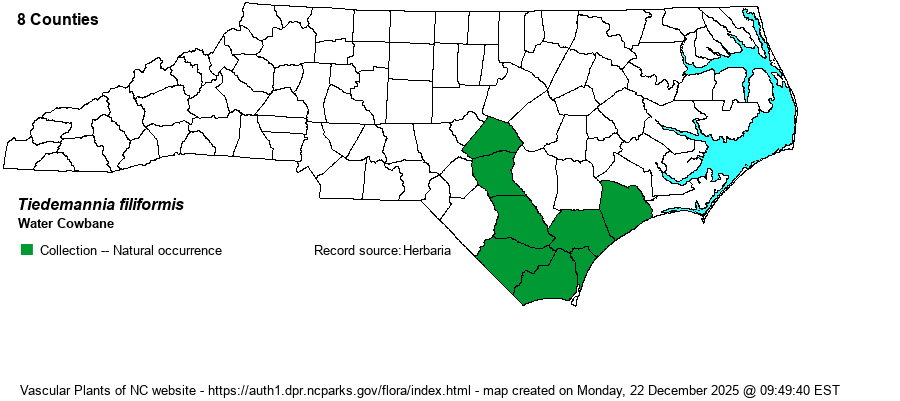| Author | (Walter) Feist & S.R. Downie | |
| Distribution | Present in the southern Coastal Plain, north to Harnett and Onslow counties. Harnett and Cumberland County records are from Fort Bragg.
This is a Southeastern species, ranging north to southeastern NC, and south to FL and TX. | |
| Abundance | Uncommon and somewhat local, in its fairly small range in the state. | |
| Habitat | This is a wetland species of a number of different habitats. It occurs in wet savannas, seepages, pond margins, swamp borders and openings, and ditches. It is not known from clay-based Carolina bays where the extremely rare T. canbyi grows.
|
| Phenology | Blooms from July to August, and fruits from August to September. | |
| Identification | This species is very similar to the extremely rare T. canbyi. Each is a tall herb growing to 3 feet tall or more, but with a slender stem. There are a few stem "leaves", each being "septate phyllodes" -- essentially just petioles, to about 6 inches long. The one to several umbels have very small white flowers. In this species, the lower "leaves" are retained until flowering, whereas in the rare species they tend to drop before flowering. Also, this species has 10-30 rays/umbellets per umbel, as opposed to only 5-9 rays/umbellets per umbel in T. canbyi. There are also differences in the fruits of these two; see Weakley (2018) for details. T. filiformis is not yet known from the Carolina bay where T. canbyi grows, nor from Scotland County, nor apparently from Carolina bays. Even so, take care in identifying these two species. | |
| Taxonomic Comments | This species as well as the other was included in Oxypolis. Some references probably still do list it as O. filiformis.
| |
| Other Common Name(s) | Water Dropwort | |
| State Rank | S3 [S2S3] | |
| Global Rank | G5 | |
| State Status | | |
| US Status | | |
| USACE-agcp | OBL link |
| USACE-emp | FACW link |

